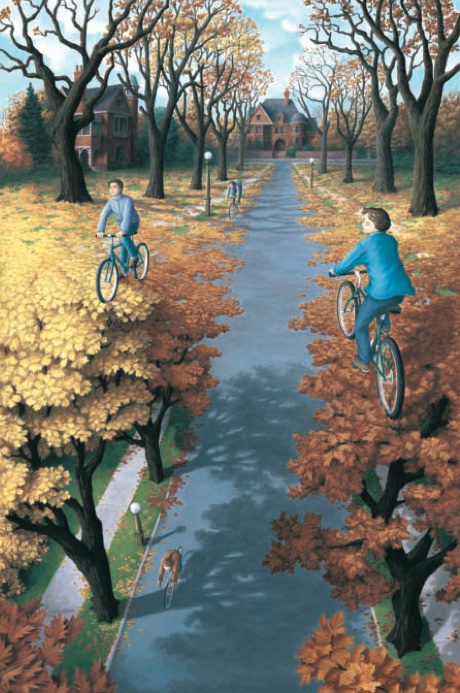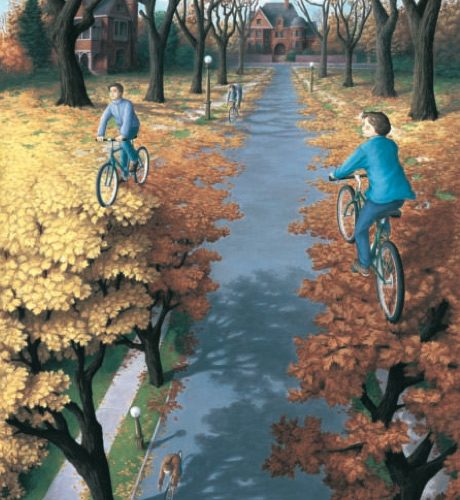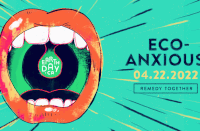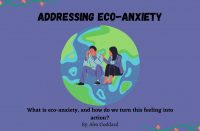BACK IN 1971, the founders of this publication called it Alternatives. Bob Paehlke, who played a big role in the conception, says the idea was to explore better options for a blindly pro-consumption and pro-growth-at-all-costs society in which almost no one was thinking about the long term.
BACK IN 1971, the founders of this publication called it Alternatives. Bob Paehlke, who played a big role in the conception, says the idea was to explore better options for a blindly pro-consumption and pro-growth-at-all-costs society in which almost no one was thinking about the long term.
Today, the situation is a little different but the core agenda holds. Our world has stumbled further along the old path, making the need for better options greater than ever. At the same time, alternatives to the entrenched conventions have been more fully elaborated and more widely tested. Many have crept into the edges of accepted practice. The following three short pieces consider why and where, and against what.
Why Alternatives
BY SOME MEASURES, global conditions today are better for more people in more places than ever before. At the same time, our most crucial human and biophysical systems are increasingly wobbly, and our current path seems to be leading towards a precipice.
Three quite basic, but very significant, factors explain our situation:
First, we have already overshot the planet’s sustainable carrying capacity for humans (given our current technological and managerial abilities) and our demands are still rising. The World Wildlife Fund calculates that the effects of human demands for energy and materials crossed the line in the late 1970s and are now about 50 per cent beyond what can be maintained.
Second, despite these excessive takings, huge numbers of people do not have enough, and the main flow of resources is away from those who need them most. According to the Food and Agricultural Organization, about 925 million people were undernourished in 2008, up from about 850 million in 1990. Meanwhile, the richest 10 per cent of the world’s population get about 67 per cent of the world’s income and the poorest 10 per cent are left with about 0.22 per cent.
Third, in a world with overshot biophysical boundaries and a billion or more people in destitution, tensions, conflicts and risks of cascading system failures must rise. Already we see vulnerabilities and uncertainties due to climate instability, the fragility of international financial and food systems, broad access to destructive technologies, deepening water insecurity, rising fuel prices and narrowing self-interest.
British environmentalist and writer Jonathon Porritt has offered the following concise summary: “The scientific evidence tells us all we need to know: carry on with business-as-usual growth-at-all-costs, and we’re stuffed.”
Turning those trends around would be a Very Good Idea but No Small Thing. The trends themselves are merely symptoms. Beneath them lie the defining assumptions of the most powerful organizations of our times. The following four big convictions provide the standard rationale for most conventional institutional practice today:
• Economic growth based on further increases in the exploitation of energy and material resources is the only practical way to improve overall well-being.
• The only feasible response to poverty is to expand overall material wealth and expect benefits to trickle down to the poor.
• Economic motives and technological capacities can be counted upon to find substitutes and repairs for everything we deplete or degrade.
• Competitive global-market behaviour, supplemented by government regulations, incentives and gap-filling can and will guide change in the long-term public interest.
These assumptions were roughly plausible in the days when it was possible to imagine that the world’s resources were limitless and the route to progress was simple. Now, they are fantasies.
On a planet that is already overstressed, more extraction cannot deliver lasting well-being for anyone. What is most likely to trickle down to the poor is greater insecurity and vulnerability. And the public and private sector bodies that have failed to slow our slide to the brink of “stuffed” (much less ensure ecological recovery, eliminate poverty and stabilize atmospheric chemistry), cannot be relied upon to deliver us from the looming evils, at least not as presently mandated and motivated.
We are now firmly in a world of limits and complexity. Building lasting well-being in such a world requires adoption of a quite different set of basic working assumptions – alternative ways of thinking, setting priorities, structuring institutions and distributing power – as well as alternative individual lifestyles and day-to-day choices.

Autumn Cycling
By Rob Gonsalves
Alternatives Everywhere
THE BIG IDEAS and conventional assumptions that dominate modern culture are visible in the practices of established authorities in virtually every field of inquiry and endeavour. That is hardly surprising. Despite the modern tendency to divide everything into separate boxes of expertise and authority, the tentacles of mutual influence reach out. Cheerfully, the same is true about the alternatives. The critiques and counter proposals in all of these fields also share common themes and influence each other.
Virtually everywhere we might look, the problematic conventions are matched by alternatives built on different, more realistic and more promising premises about people and the planet. The following discussion covers a few illustrative examples, some of which have been maturing for many decades.
Democracy
The conventional view of democracy assumes that power corrupts and masses are asses. Elites should govern, but they will be inclined to serve their own interests. Therefore, the people should get to choose between competing elites (parties) in regular elections. But that is all. Despite the common cliché, conventional democracy is not about government by the people. It is about preventing tyranny.
The main alternative approaches to democracy hold that most people have something to contribute to public life and these contributions are needed. No combination of public and private sector authorities is likely to have the incentive, capacity or credibility to deal with everything. Moreover, people build understanding of the issues and their abilities in collective decision making through experience. Democracy is therefore best served by expanding the empowerment and engagement of as many voices as possible.
Economy
In conventional market economics, humans are essentially consumers with insatiable desires for satisfactions, and nature is essentially a source of resources for (temporarily) satisfying human desires. Self-interested competition among producers and consumers for resources and satisfactions uses the only reliable motive to drive efficiency and innovation. Indeed, the market mechanism is assumed to be powerful enough to ensure that we will find substitutes for all depleted commodities, and repairs for all significant damage.
The alternatives hold that people are not merely individual consumers but also social, creative, productive and perhaps also aesthetic and spiritual beings. Similarly, nature is not merely a warehouse of resources but also home and habitat (for us and others), and the highly complex and poorly understood supplier of the basics for survival and well-being. Alternative economics addresses the blind spots of conventional market behaviour by expanding the realm of what is valued – recognizing social goods and ecological services, closing the gap between rich and poor, and protecting the interests of future generations.
Technology
The conventional histories of technology used to be all onward and upward: successive increases in knowledge and technical abilities leading to the gradual conquest of nature and liberation of humanity. That story survives, perhaps most purely in biotechnology promotion, but it has been challenged at least since Mary Shelley’s Frankenstein (1818) and was seriously undermined by the horrors of the 20th century (mustard gas, Holocaust, Hiroshima, Bhopal, etc.), well before the unsustainable trends were obvious.
The alternatives are not all small or beautiful. But they address the tension between promise and peril. They consider how to foster innovation and precaution, when to insert the concept of enough, and what means of pushing technological advances can best serve the least advantaged. They also aim for advances with less energy and material demand, more respect for particular conditions, and greater potential for local control.
Resource management
In the conventional view, nature is the sum of its individual components – genes, beings, objects and forces – that interrelate in obedience to the discernible laws of nature. Natural resources are therefore suitable subjects for expert management aiming to maximize sustainable yield.
The alternatives emphasize the complexity of the interrelationships, which make the various wholes greater than the sums of parts. We can get humans to the moon and back. But managing nature is infinitely more ambitious. It involves multiple, dynamic and interacting complex systems interconnected through multiple scales and influenced by a host of biophysical factors and human interventions. Full understanding and predictive certainty are not serious options. Instead, the watchwords are precaution, adaptation, mobilization of multiple perspectives, experimentation and learning.
Energy (with rough equivalents in water and waste management, among others)
The conventional approach is to assume energy demand must rise with economic activity and to focus on meeting increased demand through additional supply. Typically, the favoured supply options are large, centralized, capital-intensive, and based on highly specialized technical expertise. They demand long-term commitment to the established path and are vulnerable to unanticipated errors and events.
The alternatives aim to reduce primary energy demand while enhancing well-being. The favoured options therefore begin with energy efficiency initiatives (reducing waste, matching energy quality and scale to end use needs, etc.) and proceed as necessary to supply sources that are diverse, renewable, small-scale, dispersed, adaptable to different contexts, broadly affordable, manageable with accessible expertise and adjustable as circumstances change.
Futures
The conventional assumption is that the future will be like today, except with more and better stuff. Some anticipatory planning and preparation is accepted but the key tool is forecasting. Essentially that means projecting current trends into the future and considering the implications for new markets, more infrastructure and additional services.
The alternative is to suspect that important current trends are leading us towards the precipice and to focus instead on getting to a desirable future rather than the future we might otherwise get. For that, the appropriate tool is backcasting, with which we begin by depicting a desirable future and then look for plausible paths between where we are and where we want to be, recognizing complexities and uncertainties.
Others
There are similar conventions and alternatives in development assistance, architecture and city design, workplace management, anti-poverty programs, agriculture, the treatment of mental illness, and a host of other fields.
All of them taken together
The conventions are about components and simple rules, straight-line trajectories, and profound confidence in the established path. They inhabit a realm with no limits. The biosphere is expected to accommodate ever-growing demands and human ingenuity is expected to overcome all obstacles.
The alternatives address a more complex, constrained and uncertain world, but with a richer diversity of players, motives and objectives. They encourage us to recognize social-ecological interdependencies, reward humility, foster more participation, enrich understanding and favour a longer vision. They incorporate efforts to decouple well-being from material growth, ensure sufficiency and opportunity, anticipate error and surprise, build stewardships and enhance equity within and between generations.
These qualities are now recognized as the core requirements for progress towards sustainability. But they were all identified in proposed alternatives to unsatisfactory conventions long before the language of sustainability arrived to pull it all together.
It does not follow that the alternatives are all right and the conventions are all wrong – or that the two are entirely incompatible despite the contrasts in underlying assumptions. It is not likely to be possible to leap from one path to another in a single bound and, in any event, experimenting with a range of options is probably wise.
Still it is good to have alternatives, to know that they are everywhere and to see that despite their various origins, they share a common approach to a better future.
Resistance
GIVEN THE NEED to reverse global direction, these should be boom times for purveyors of alternatives to business-as-usual. But that is not how the world works. Never has been. Alternatives to established ways of thinking and doing have always been discouraged. Often they’ve been squashed with violence. Consider Socrates or Christ, or even Galileo, though he got off easy.
Alternatives are usually opposed when current authorities fear loss of advantage, but there are also deeper reasons. Change is risky, and if things go wrong, reversing direction or finding another solution is hard.
Most of the old cultures knew that. In their defining stories, curiosity opened Pandora’s Box of evils. Innovation upset the natural order of things. Hubris offended the gods. Cultures with other stories and more reckless ambitions were pushing their luck.
Five thousand years ago the irrigation-happy Sumerians pushed their luck. Their great Epic of Gilgamesh celebrated the conquest of nature, and the building of the first great agricultural civilization. It worked well enough for a few hundred years. But the irrigators did not know enough about soil and water systems. Rising salts poisoned the fields, and by the time the Sumerians recognized the problem, they were too deeply invested in big-irrigation agriculture to have any other practical options. Their civilization returned to dust. Sumer gambled on a hugely innovative approach to thinking and doing, and it lost.
Five hundred years ago, Western cultures began dabbling with much bigger ambitions, based on unleashed scientific and economic progress. The new, modern thinking worked well enough for a few hundred years. Indeed, it was in some ways so successful that the agenda was extended to the global scale. But the new authorities did not know enough about global biophysical and socio-economic systems – about the potential legacies of colonialism, consumerism and climate change (and equivalent matters starting with other letters). Consequently, our astonishing gains are now teetering on a foundation of dangerously unsustainable practice.
As in Sumer, our most powerful institutions, locally to globally, are too deeply invested in the established approach to welcome other thoughts. Instead, they question the science, blame lifestyle choices and hope for a technological fix. As the road gets bumpier, they hold more tightly to the wheel.
But we are not in Sumer. We know what happened to the great walled city of Gilgamesh, and to the many other civilizations that pushed their luck. Over the intervening millennia, we have learned a few things. In much of the world, we now have generally greater tolerance for alternative approaches than was evident in the days of Socrates, Christ and Galileo. Also, we now have a great wealth of alternatives.
The available alternatives are not all well developed and have not yet been consolidated as a clear package with an accepted label. But many options are backed by decades of thought and experimentation and a nicely labelled package may not be necessary or desirable. What matters most is that the best work shares a promising set of essential characteristics that aim to reconcile change and humility, well-being and limits, and that could be viable over the long run. That will do for a start.
University of Waterloo professor and the magazine’s long-time editor, Robert Gibson chairs Alternatives’ editorial board and writes our back-page column: What’s the Big Idea. He reads every word of every issue and can be thanked for the best – and the poopiest – article titles. Substitution gets us genetic engineering, nuclear reactors, ocean draggers and unconventional oil.













